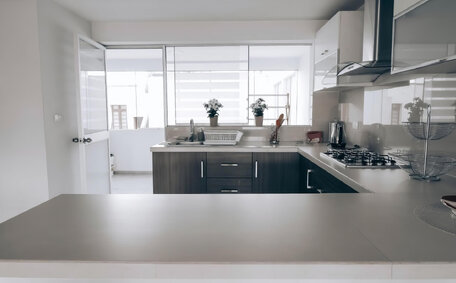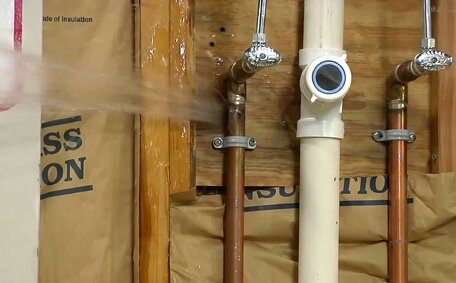Common hand tools for gas fitting
Some of the most essential hand tools for plumbing gas fitting tasks include:
- Pipe wrenches - Crucial for securely gripping and turning pipes, ensuring a robust hold. Make sure to choose high-quality brands like Ridgid or Channellock for durability.
- Basin wrenches - Ideal for adjusting nuts and bolts on faucets in restricted spaces.
- Tubing cutters - Designed for rapid and clean cuts in copper tubing, these precision tools feature wheel-based cutting mechanisms.
- Hacksaws - Cut pipes in tight spaces that tubing cutters can’t reach.
- Allen keys and screwdrivers - Both are a must for securing and unscrewing various fittings. Opt for the right hand tools and choose insulated versions when working with gas.
- Pliers - Essential for gripping fittings and compressing materials, with water pump pliers offering broader jaw capacity.
- Adjustable wrenches - Ideal for grabbing and twisting pipes fittings, even when made of stainless steel and irregular-shaped.
- Tape measures - Essential for precise gas pipe measurements.
- Level tools - Ensure pipes are correctly aligned to maintain an optimal gas flow.
Secure a sturdy tool box to organise and protect your tools, enabling safe handling and compliance with safe work practices. Ensure you’re using the correct tool for every task, maximising safety and efficiency, while integrating a dependable management system for gas-related tasks.
Power tools and specialty gas fitting equipment
Electric and pneumatic drills are indispensable power tools for swiftly drilling holes in walls and floors to lay gas pipes. Select professional-grade power drills, compatible with specialised bits for masonry tasks during fuel gas line installation. Don protective goggles, crucial when managing medical gas installations, to shield your eyes from debris.
In need of top-tier specialty gas fitting equipment? Consider the following options:
- Pipe threaders - Cut precise threads for gas pipe connections.
- Gas leak detectors - Sniff out gas leaks that pose a danger for prompt correction before proceeding.
- Pipe benders - Form exact bends without crimping pipes.
- Flaring tools - Flare copper tubing ends to connect with fittings.
- Pressure gauges - Ensure your safety by detecting abnormal gas pressure levels.
- Appliance metres - Fine-tune appliance burners for maximum efficiency.
Before beginning work, conduct a thorough inspection and proper storage of all tools and equipment to avoid damage. Follow manufacturers’ maintenance instructions, such as regular calibration, to keep specialty gas equipment in peak condition, benefitting your business and career growth. Maintaining equipment in this manner ensures safe and precise operation during essential gas work.
Mueller Co.'s Air Power Operators merge a power drill and a compact compressor, streamlining remote gas pipe installations. Features like smooth throttle control and low noise are designed to operate hose fitting equipment such as welding hose and GroundHog underground piercing tools efficiently.
Methods for joining and cutting gas pipes
Plumbers and gas fitting professionals use a range of methods for joining or cutting gas pipes during installation or modification:
Joining Techniques
- Threaded connections - Cutting accurate pipe threads to screw pipes together via fittings. Requires pipe threader tools.
- Soldering - Joining copper pipes by heating solder to bind pieces together. Needs soldering torch, emery cloth, flux, solder, and safety equipment.
- Brazing - Similar to soldering but done at higher temperatures with brazing rods. Useful for larger pipes.
- Welding - Employing handheld torches or electric arc welders to fuse pipes, a critical skill for gas fitters.
- Compression fittings - No heating or threads needed. Just insert pipe into fitting and tighten nut to seal in place.
- Push-to-connect fittings - Pipe presses easily into fitting without tools for quick, secure joints.
Cutting Tools
- Pipe cutters - Best for cutting smaller diameter copper pipes neatly with wheel-based cutters.
- Hacksaws - Manual saws to cut pipes in tight spaces other tools can’t access.
- Propane torches - Portable torches used to slice through steel pipes with small focused flames.
- Electric arc welders - Cut or join pipes with intense heat from electric arcs for heavy duty gas work.
Each pipe fitting technique offers unique benefits and challenges related to efficiency, safety, skill requirements, cost, and material compatibility. Invest in quality equipment and work safely, emphasising health safety measures like wearing welding gloves and face shields to prevent burns or eye injuries while handling heated tools.
Testing gas systems and safety gear
Rigorously testing gas systems and donning proper protective gear are non-negotiable to ensure the safety and efficiency of your job in gas fitting.
Testing Equipment
Key gas testing equipment comprises:
- Manometers - Measure gas pressure levels in lines. Ensure readings aren’t too high or low.
- Combustion analyzers - Check carbon monoxide and combustion efficiency at appliances.
- Gas leak detectors - Sniff out dangerous gas leaks for correction before proceeding.
- Pipe pressure tests - Reveal leaks by pressurising installed gas pipes and monitoring readings.
Confirm calibration of testing equipment per your work method statement and ensure batteries are charged before use. Perform comprehensive tests as detailed in your method statement following gas pipe installation, modifications, or servicing of appliances, to confirm operational safety.
Personal Protective Equipment (PPE)
Gas fitters must wear appropriate personal protective gear to prevent injuries from heat, flames, chemicals, and heavy equipment. PPE may include:
- Fire-resistant clothing that a fitter can wear during high-heat tasks
- Welding gloves and sleeves
- Safety goggles
- Face shields for welding or brazing
- Respirators to avoid breathing in toxic fumes
- Earplugs when using loud power tools
- Steel-toe boots
- Hard hats for overhead hazards
Regularly inspect all equipment to ensure gas safety and check for wear or damage before use. Opt for equipment from vendors providing gear certified by recognised testing agencies for assured durability and reliability. It’s the obligation of employers to provide essential safety equipment for gas installation jobs and enforce regulations to maintain workforce and workplace safety.






